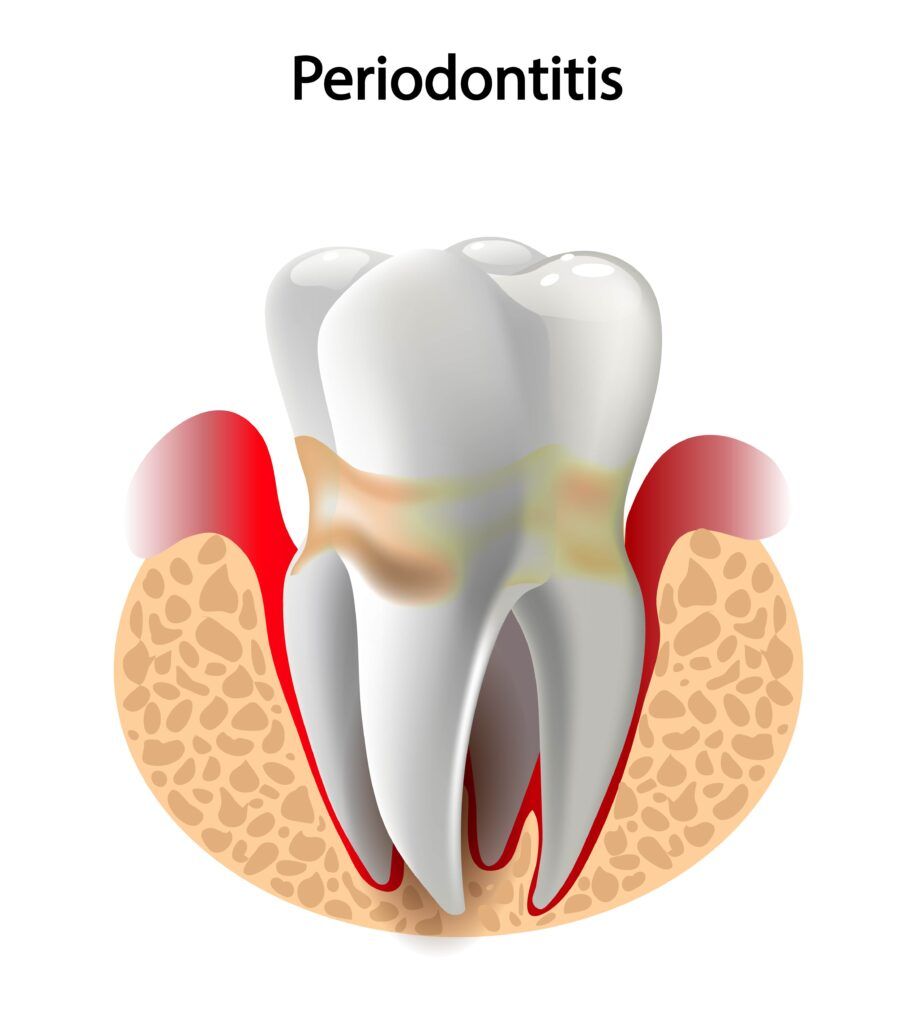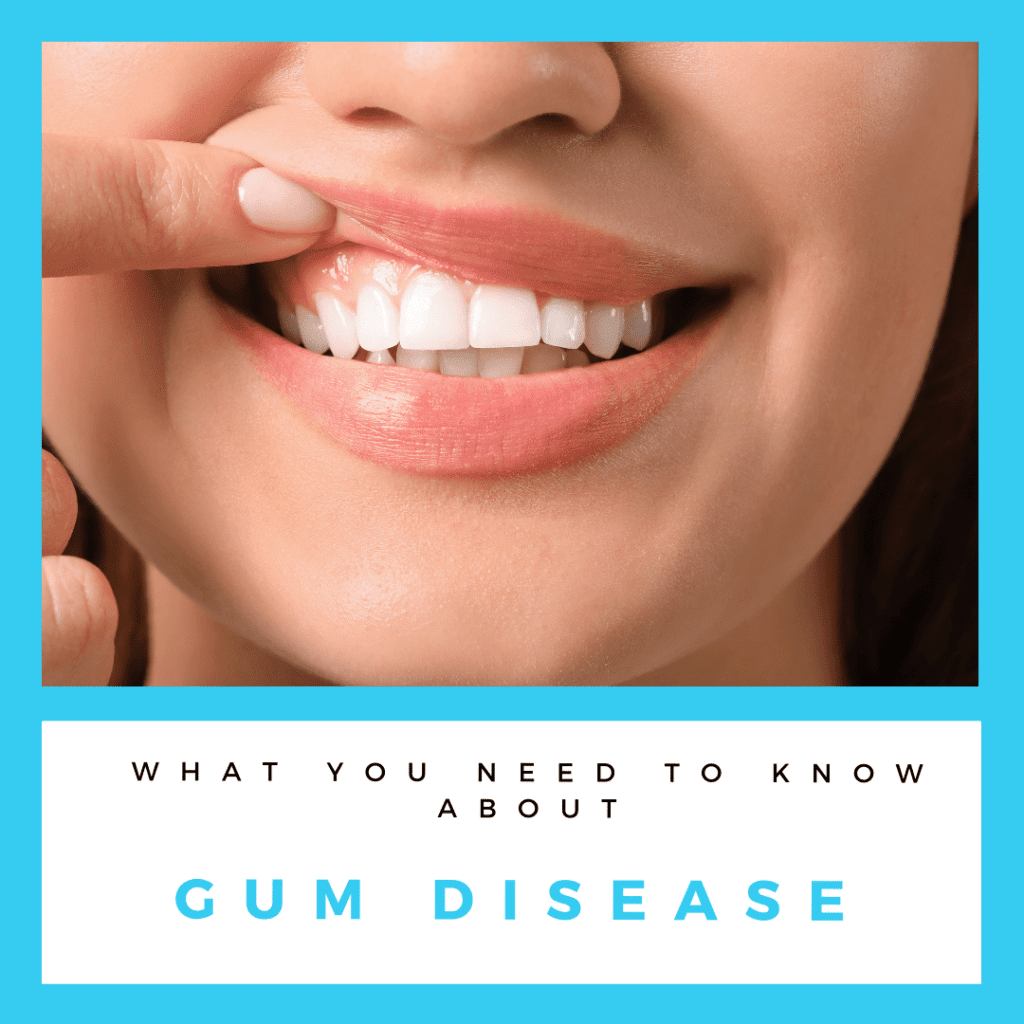Gum disease is an American oral health epidemic. In fact, it has been found that as many as 47.2% of Americans over the age of 30 are affected by some form of gum disease. Since the month of September is National Gum Health Month, we think it is a good idea to take a deeper look into gum disease and how it affects your oral health. Additionally, we will name a few strategies you can use to decrease your risk of developing gum disease.
For starters, it is important to know what gum is and how it can affect your gums. In the simplest sense, gum disease is basically an infection of the gums and other periodontal structures. Collectively, these structures work together to support your teeth, so your teeth can become loose as these structures become weaker over time. There are two main types of gum disease, each categorized by its severity.
Gingivitis
The first form of gum disease is known as gingivitis. Gingivitis is a mild form of gum disease that causes the gums to become red and swollen. In many cases, gums with gingivitis also bleed when brushing, flowing, or eating. At this stage, however, gingivitis does not produce uncomfortable symptoms and is not always caught early on. While gingivitis can easily be reversed with proper treatment and oral hygiene, not treating the disease can cause it to progress.
Periodontitis

Untreated cases of gingivitis can eventually develop into periodontitis. Periodontitis is an advanced form of gum disease that cannot be reversed with treatment, but instead must be managed. It is characterized by the formation of periodontal pockets, which are spaces between receding gums and tooth roots. These gum pockets will continue to grow deeper and will collect more and more plaque and bacteria. Overtime, this plaque and bacteria will cause the jawbone beneath the gums to deteriorate, which can make the teeth loose.
There are different types of of periodontitis, including:
- Aggressive periodontitis: occurs in patients that are otherwise healthy and is characterized by the rapid formation of periodontal pockets and bone destruction. There is believed to be a genetic predisposition to aggressive periodontitis.
- Chronic periodontitis: the most common form of periodontitis that is prevalent in adults. Chronic periodontitis is characterized by the progressive formation of periodontal pockets and bone loss. This progression usually occurs gradually, however there are also periods of rapid progression that can occur.
- Periodontitis as a manifestation of system diseases: certain systemic conditions can result in periodontitis such as heart disease, respiratory disease, and diabetes. In these cases, periodontitis usually starts at a younger age.
- Necrotizing periodontal disease: an infection primarily seen in individuals who are immunocompromised or malnourished. It is characterized by necrosis of gingival tissues, periodontal ligament, and alveolar bone.
How to Prevent/Manage Gum Disease

By far, the best way to prevent and/or manage gum disease is to practice good oral hygiene. This means brushing twice a day with fluoridated toothpaste and flossing daily. Regular oral hygiene helps to decrease the amount of bacteria in your mouth, which decreases its ability to infect the gums. It is especially important to floss along the gum line to prevent bacteria from infecting the gums. Additionally, regular dental cleanings are recommended so that your dentist can remove plaque and bacteria from places where you may have missed. You can also prevent gum disease by using mouthwash after meals to wash away food particles and bacteria, and eating healthy foods that are low in sugar.

Dr. Sarmad Channo, a Rochester, MI dentist, received his doctorate degree from New York University Dental School. Since then, he has continued studying to broaden his expertise and has also graduated from Progressive Orthodontic Seminars with the highest of honors. Dr. Channo has also served as an instructor for both the McGann Postgraduate School of Dentistry and Progressive Orthodontic Seminars.

